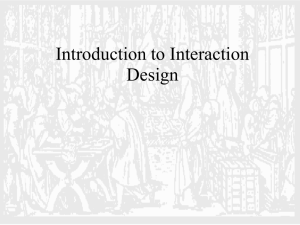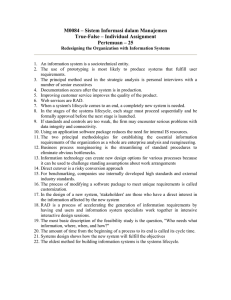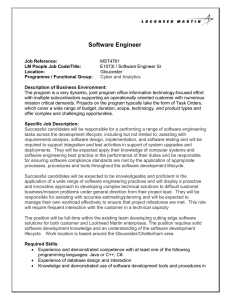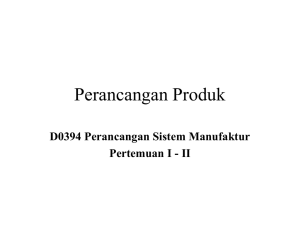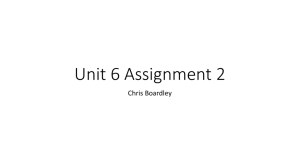18 Invaluable Lessons on ADF-JSF Interaction
advertisement
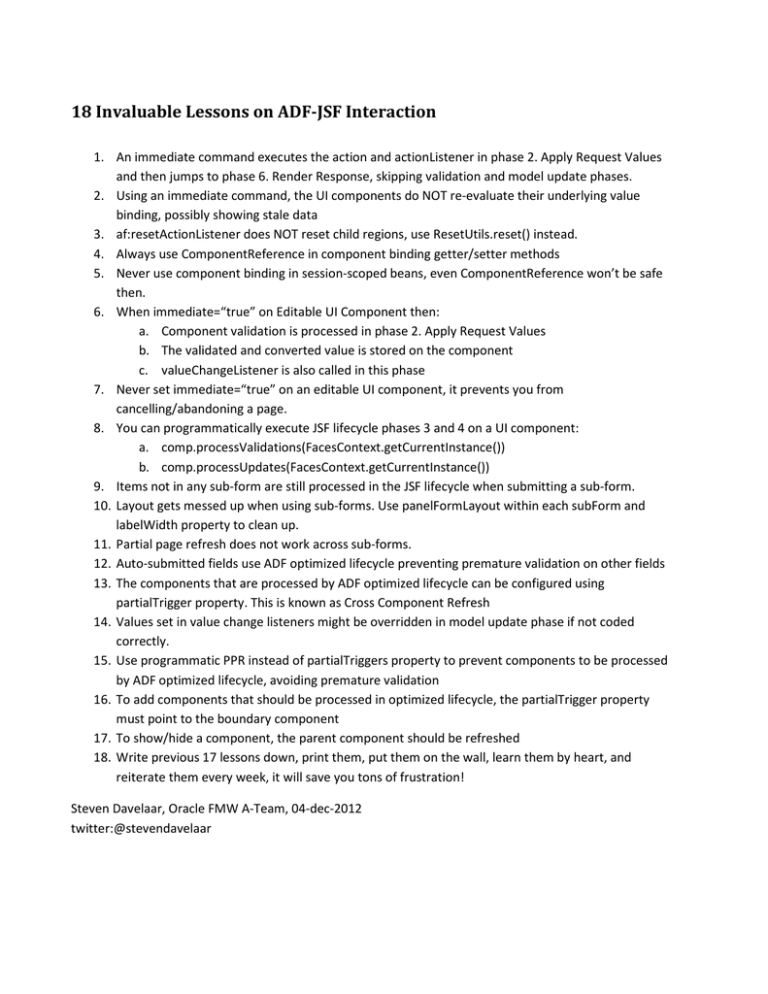
18 Invaluable Lessons on ADF-JSF Interaction 1. An immediate command executes the action and actionListener in phase 2. Apply Request Values and then jumps to phase 6. Render Response, skipping validation and model update phases. 2. Using an immediate command, the UI components do NOT re-evaluate their underlying value binding, possibly showing stale data 3. af:resetActionListener does NOT reset child regions, use ResetUtils.reset() instead. 4. Always use ComponentReference in component binding getter/setter methods 5. Never use component binding in session-scoped beans, even ComponentReference won’t be safe then. 6. When immediate=“true” on Editable UI Component then: a. Component validation is processed in phase 2. Apply Request Values b. The validated and converted value is stored on the component c. valueChangeListener is also called in this phase 7. Never set immediate=“true” on an editable UI component, it prevents you from cancelling/abandoning a page. 8. You can programmatically execute JSF lifecycle phases 3 and 4 on a UI component: a. comp.processValidations(FacesContext.getCurrentInstance()) b. comp.processUpdates(FacesContext.getCurrentInstance()) 9. Items not in any sub-form are still processed in the JSF lifecycle when submitting a sub-form. 10. Layout gets messed up when using sub-forms. Use panelFormLayout within each subForm and labelWidth property to clean up. 11. Partial page refresh does not work across sub-forms. 12. Auto-submitted fields use ADF optimized lifecycle preventing premature validation on other fields 13. The components that are processed by ADF optimized lifecycle can be configured using partialTrigger property. This is known as Cross Component Refresh 14. Values set in value change listeners might be overridden in model update phase if not coded correctly. 15. Use programmatic PPR instead of partialTriggers property to prevent components to be processed by ADF optimized lifecycle, avoiding premature validation 16. To add components that should be processed in optimized lifecycle, the partialTrigger property must point to the boundary component 17. To show/hide a component, the parent component should be refreshed 18. Write previous 17 lessons down, print them, put them on the wall, learn them by heart, and reiterate them every week, it will save you tons of frustration! Steven Davelaar, Oracle FMW A-Team, 04-dec-2012 twitter:@stevendavelaar
